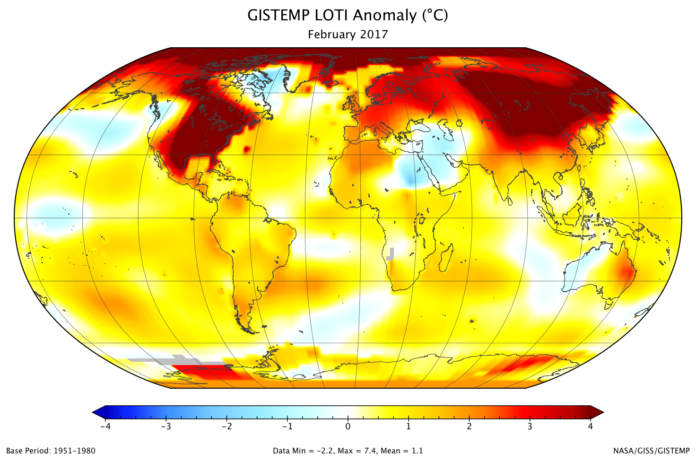The month of February had several notable events. It has now secured a place in NASA’s record books.
February 2017 was the second warmest February in 137 years, according to a monthly analysis of global temperatures by scientists at NASA. NASA’s Goddard Institute for Space Studies (GISS) maintains this modern record keeping.
A mean February temperature was set from the data taken during the period, 1951-1980. Last month’s temperature was 1.1 degrees Celsius warmer than the mean February temperature. The two top February temperature anomalies have occurred during the past two years.
According to the record, February 2016 was the hottest, with 1.3 degrees Celsius warmer than the February mean temperature. February 2017 stands second, with a difference of just 0.20 degrees Celsius, after February 2016.

Source: NASA- GISS
The modern global temperature record begins around 1880. The previous observations didn’t cover enough of the planet, and therefore could not be considered for any global generalisation.
The monthly analysis by the NASA’s GISS team is assembled from publicly available data acquired from about 6,300 meteorological stations around the world.The meteorological stations include, ship-based and buoy-based instruments measuring sea surface temperature, and Antarctic research stations. They update the monthly analyses when additional data becomes available. The results are subject to change.
This record is of major concern. The rising temperature indicates the increase in global warming. The recent weather report also reminds us of the responsibility each on of us have towards the world.




























